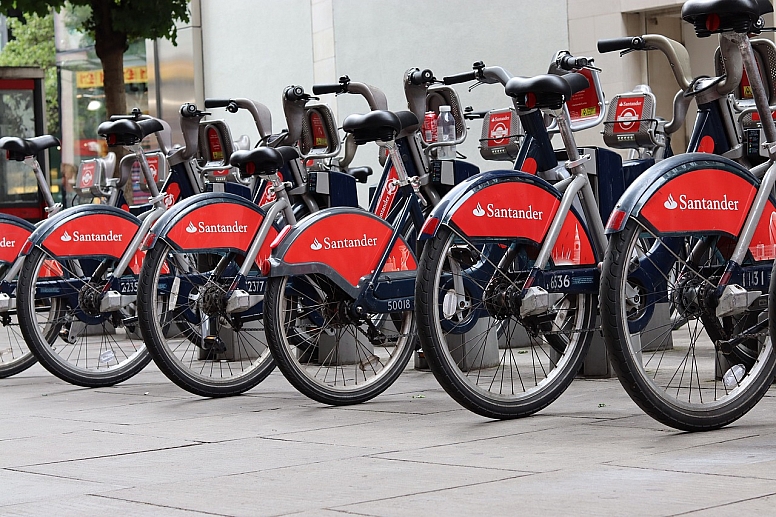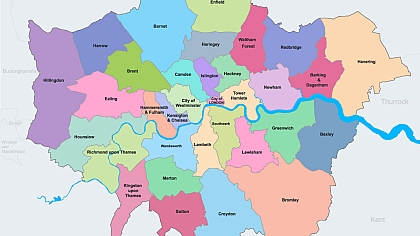
How London's Transport Networks Are Embracing Sustainability
London is the city of lights and life, which comes with its consumption and sustainability concerns. Whilst its rich and vibrant atmosphere drives millions to visit the city every year, the city has committed to tackling its energy consumption, and greenhouse gas production, and is ultimately investing millions into less harmful transport options. Despite it still being one of the worst cities in the world for traffic and air pollution, there is a small yet significant change taking place within the city, which is sure to spread across the rest of the UK.
Whether you live in London, or you are considering a visit to the city, there are many sustainable transport options you should take advantage of when travelling around the city.
Cycling Revolution
Despite being considered a concrete jungle to many, cycling has taken priority in the city for transport, with almost 40% of road traffic now coming from cyclists. Whilst they still have to wait amongst the Co2-emitting vehicles, this is an example of great change that the city has adapted to. With a surge of cycle lines and the introduction of the infamous ‘Boris Bikes’, and also adult electric scooters, Londoners have every reason to ride around the city as opposed to driving in consuming vehicles. With a combination of great physical exercise and a 100% reduction in carbon consumption per cyclist and scooter rider, these rentable vehicles are a great way to travel and experience everything the city has to offer.

Extensive Public Transportation Network
London's public transport network is one of the most infamous, historic and up-to-date networks in the world. With electric buses, trains, and underground options with their dedicated commuting lines and lanes, there is no better place to travel by public transport than London. You will likely find a transport stop within 10 minutes of each location within the city, so you are certain to find your way home sustainability should you get lost. The Underground, commonly known as the Tube, is a lifeline for millions of Londoners and visitors alike. Its electrified system minimises the carbon footprint compared to traditional diesel-powered alternatives.
Electric Buses
Speaking of electric transport, London has been a pioneer in adopting electric buses to improve air quality in the city. With a commitment to transition its entire bus fleet to zero-emission vehicles, the city aims to reduce harmful emissions and combat air pollution, electric buses not only contribute to cleaner air but also set an example for other major cities grappling with similar environmental challenges.
Congestion Charges
Whilst diesel and petrol-powered vehicles are still permitted to enter the city, the introduction of congestion chargers has warned many people off using their vehicles to travel into the city. This initiative has encouraged more people to make use of the electric-powered public transport options whilst limiting any unnecessary car trips. It is also much safer for pedestrians and tourists visiting the city. Many still pay this congestion charge, however, the revenue that is generated from congestion charges is reinvested back into developing sustainable public transport.
Low Emission Zones
In addition to these congestion charges, London now has low-emission zones which prohibit vehicles that emit large quantities of CO2 from entering selected zones. If vehicles do not meet these specific emission standards needed for the location, they will face a penalty. This encourages clearer air in areas that previously were dangerous and also supports a safer urban environment for its residents and visitors.
Social Inclusivity
Not only are Londond sustainable transport networks great for the environment, but they also promote social inclusivity and accessibility to all boroughs in the London area. Despite London having more costly zones, the population of London and surrounding cities have immediate access to commute in and out of the city without restriction. A diverse population is a thriving one, and this contribution also supports pedestrian-friendly and safer living environments for the residents of the city. Reliable, and eco-friendly transport should be available to everyone no matter their socio-economic status, and London has done exactly that.
London's pursuit of sustainable transport options is driven by a multi-faceted commitment to environmental responsibility, public health, economic prosperity, and social equity. London's ability to embrace sustainability, and use its funding to make the city a safer and more accessible place to live is exactly why the city is so desirable worldwide. If you are planning to stay in London, be sure to use the endless public transport options, whether that be the underground, electric rail or rentable bikes, reduce your consumption and explore the city in its entirety!












